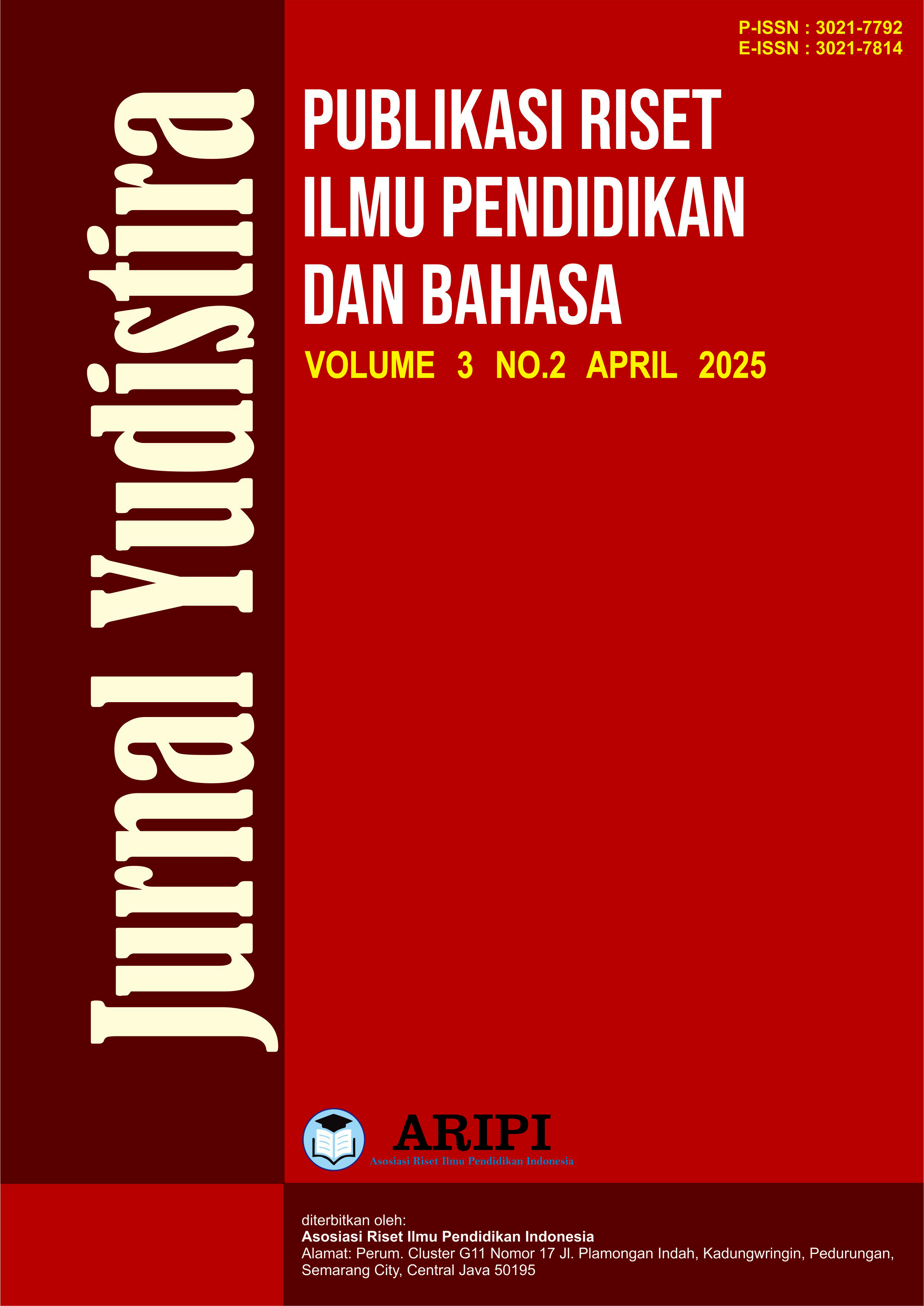Social Interaction in Terms of Practitioners of Extracurricular Sports Activities Among Middle School Students
DOI:
https://doi.org/10.61132/yudistira.v3i3.2060Keywords:
Social interaction, Sports activities, StudentsAbstract
Extracurricular sports activities are an important element of the success of school sports, which is one of the educational methods that provide students with many benefits targeting different skills, and the aim of the research was to identify social interaction in terms of practitioners of extracurricular sports activities among middle school students, and to identify any extracurricular sports activities (basketball - volleyball - football) have preference in social interaction, The researcher used the descriptive approach on a sample of students of Al-Mughira Preparatory School bin Division practicing extracurricular activities in basketball, volleyball, and football, and their number is (37) students, using the scale of social interaction, and after collecting data and processing them statistically, the research concluded that there are no differences between the three measurements among practitioners of extracurricular activities in social interaction in basketball and volleyball games. Moreover, football, as a practitioner of extracurricular activities, is characterized by high social interaction.
Downloads
References
Abdel Moneim, S. (2019). The role of physical and sports activity in social interaction among secondary school students (Master’s thesis). Kasdi Merbah University, Institute of Sciences and Techniques of Physical and Sports Activities.
Alaa, Z. (2012). Social interaction in its dimensions (engagement, cooperation, communication, interest in others) and its relationship with the leadership personality of coaches in the qualifying league for the premier league in handball. Journal of Sports Education Sciences, 5(2).
Ali, O., & Hamid, H. (2021). Building of psychological directions parameter for Anbar Educational Directorate teachers for non-specialty towards practicing classroom and extracurricular activities. Anbar University Journal of Physical Sciences and Sports, 12(23), 23–46. https://doi.org/10.37655/uaspesj.2021.175083
Ali, O., Mushref, A., & Ali, B. (2024). The role of supplements in improving muscular strength and endurance in professional soccer players: A systematic review. American Journal of Social and Humanitarian Research, 5(12), 485–497. https://doi.org/10.31150/ajshr.v5i12.3116
Bolotnikov, A. A., Imangulov, R. Sh., & Gimadeev, R. N. (2019). Competences of social interaction and their role in the process of physical education. Advances in Economics, Business and Management Research, 114. https://doi.org/10.2991/aebmr.k.200114.146
Elsayed Ali, S. (2004). Social interaction and the phenomenological perspective. Cairo: The Egyptian Library for Printing, Publishing, and Distribution.
Khalaf, H. H., Abrahim, A. A., Khaleel, N. M., Hummadi, J. N., Mushref, A. J., & Ali, O. A. (2024). The impact of the DINES model as an educational mediator on cognitive achievement and learning overhead passing skill in volleyball. Proximus Journal of Sports Science and Physical Education, 1(12), 70–71.
Khalaf, Y. A., AbdulJabbar, M. A., & Ali, O. A. (2025). The effect of sports job burnout on the performance of workers in student activities departments in Iraqi universities. Retos, 66, 86–95. https://doi.org/10.47197/retos.v66.113271
Laoureniq, Y. (2015). Extracurricular sports activities and their role in achieving some social relationships among secondary school students. Journal of Sports Creativity(15).
Marwan, A. M. (2000). Descriptive and inferential statistics (1st ed.). Amman: Dar Al Fikr for Printing and Publishing.
Mejadi, M., et al. (2021). The role of practicing extracurricular sports activities on the mental health of secondary education students in Laghouat City. Journal of Sports Creativity, 12(1, Part 2).
Mohamed Awad, B. (1992). Theories and methods of physical education (2nd ed.). Algeria: National Office for Publications.
Mohamed Mostafa, E. S. (2013). Teaching methods in physical education and sports (1st ed.). Alexandria: Al-Ishaa Technical Library.
Omar, A. F., Hammadi, W. K., Moseekh, L. Z., Muhammad, K. M., Saleh, M. M., & Ali, O. A. (2025). The impact of cognitive training on field intelligence growth and some composite skills of advanced football players. Retos, 66, 46–58. https://doi.org/10.47197/retos.v66.113234
Qasim Al-Mandalawi, et al. (1991). Student's guide to field applications in sports education (Part 2). Mosul, Iraq.
Saeed, S., Sabti, Q., & Ali, O. (2024). Competitive marketing vigilance and its relationship to social persuasion among a sample of sports equipment sales representatives in Iraq. International Journal of Educational Evaluation and Policy Analysis, 1(4). https://doi.org/10.62951/ijeepa.v1i4.48
Unger, J. B., & Johnson. (1995). Social relationships and physical activity in health club members. American Journal of Health Promotion, 9(5), 340–343. https://doi.org/10.4278/0890-1171-9.5.340
Wajdi Wanees, H. (1999). Attitude towards school for students participating in student activities in the second cycle of basic education. Journal of Research in Education and Psychology(4), Menoufia University.
Downloads
Published
How to Cite
Issue
Section
License
Copyright (c) 2025 Jurnal Yudistira : Publikasi Riset Ilmu Pendidikan dan Bahasa

This work is licensed under a Creative Commons Attribution-ShareAlike 4.0 International License.






